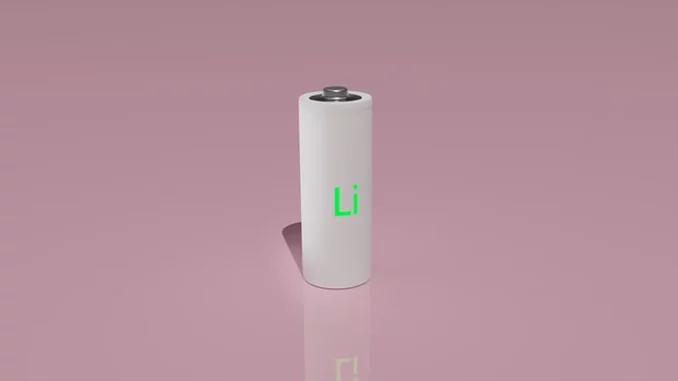
Summary
Lithium Iron Phosphate Batteries Market Set for $31 Billion Surge by 2031
The Lithium Iron Phosphate (LFP) batteries market is on the cusp of transformative growth, with projected expansion from USD 12.2 billion in 2022 to USD 31.3 billion by 2031. Dr. Emily Carter, a prominent energy consultant, highlights key drivers including technological advancements, the decreasing cost of electric vehicles (EVs), and increasing demand for sustainable energy solutions. “LFP batteries offer stability, safety, and long cycle life, making them crucial for EVs and energy storage,” says Dr. Carter. The article explores the market dynamics, key players, and regional trends fuelling this expansion.
Main Article
Understanding LFP Battery Market Dynamics
The Lithium Iron Phosphate (LFP) battery market is poised for significant expansion, driven by the need for sustainable energy solutions. According to Dr. Emily Carter, the market has long benefited from the stability, safety, and long life cycle of LFP batteries, making them a preferred choice in various sectors. “Their attributes cater perfectly to the EV and energy storage systems,” Dr. Carter explains. These applications are particularly crucial as global efforts intensify to reduce carbon footprints.
In 2022, the LFP battery market was valued at USD 12.2 billion, and forecasts suggest a rise to USD 31.3 billion by 2031. This represents a compound annual growth rate (CAGR) of 12.5% over the forecast period. The surge is largely driven by the burgeoning demand for cost-effective, safe energy storage, especially in the burgeoning EV market.
Technological Advancements and Market Drivers
One of the significant catalysts for market growth is the plummeting cost of EVs, which has become more accessible to a wider consumer base. “EV battery costs have dramatically decreased from about USD 1200 per kilowatt-hour in 2010 to under USD 100 per kWh by 2023,” Dr. Carter notes. This price reduction not only enhances EV affordability but also accelerates their adoption among environmentally aware consumers.
Technological strides are also important in the LFP market’s growth trajectory. Enhanced energy density and efficiency allow LFP batteries to better support renewable energy integration. “The thermal stability and environmental friendliness of LFP batteries make them ideal for grid storage solutions,” Dr. Carter adds, highlighting the critical role these batteries will play as reliance on renewable energy sources increases.
Industry Innovations and Key Market Players
The LFP battery sector is witnessing innovations and developments from leading companies such as BYD, K2 Energy, Relion, and A123 Systems. “These firms are pioneering advancements that keep the market dynamic,” Dr. Carter remarks. In May 2023, Sofar, a Chinese manufacturer, launched ‘Power Master’, a modular utility-scale LFP battery, showcasing ongoing market innovation.
In June 2023, Avenira, an Australian company, began operations at its new LFP battery cathode manufacturing plant in Darwin. These initiatives represent significant progress in solidifying the battery supply chain and boosting production capabilities.
Regional Growth and Market Segmentation
LFP batteries are being deployed across various sectors, including automotive, power, and industrial applications. Regionally, the market is witnessing substantial growth across North America, Europe, and the Asia-Pacific, with China, India, and Japan emerging as key players.
“The Asia-Pacific region is pivotal in LFP battery production and consumption,” notes Dr. Carter. “Their focus on renewable energy adoption and EV usage is propelling market growth.”
Detailed Analysis
Broader Market Implications and Economic Context
The growth trajectory of the LFP battery market is intertwined with broader economic and environmental trends. The shift towards renewable energy and sustainable practices is driving both policy and consumer behaviour changes. Governments worldwide are enacting policies that favour low-emission technologies, creating a fertile ground for LFP battery adoption.
Dr. Carter’s insights underscore the significance of these batteries in achieving global sustainability goals. By offering reliable, safe, and cost-effective energy storage solutions, LFP batteries are becoming integral to the energy transition narrative. As nations strive to meet climate targets, the demand for such technologies is expected to rise, aligning economic incentives with environmental objectives.
Further Development
Anticipated Trends and Future Coverage
Looking forward, the LFP battery market is set to experience several emerging trends. Dr. Carter emphasises the importance of monitoring competitive movements, staying abreast of market trends, and understanding consumer behaviour. “These insights are crucial for businesses to refine strategies and drive growth,” she advises.
As technological advancements continue and the emphasis on sustainability grows, the LFP battery market is positioned to play a pivotal role in the global energy landscape. “As we transition to a more sustainable future, the demand for efficient and safe energy storage solutions will only increase,” Dr. Carter concludes, hinting at a promising future. Readers are encouraged to stay connected for ongoing updates and detailed coverage of this rapidly evolving market.

